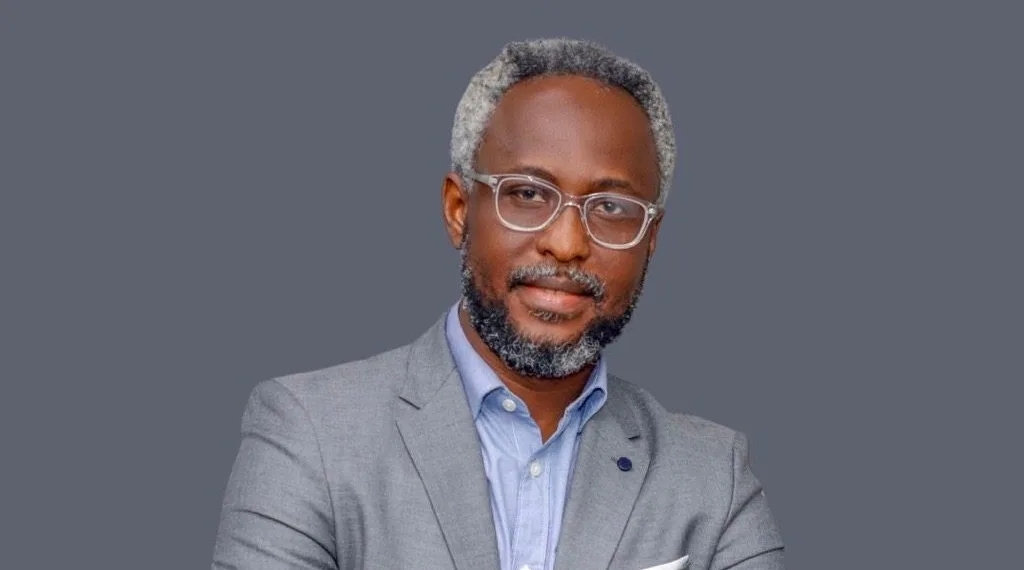Described as the ‘Godfather of banking in Nigeria’ by Forbes Africa, Jim Ovia is quite popular for his business dexterity and leadership skills, especially in the banking sector.
A Forbes cover story on him says, “Banking is where he began life as a clerk; it was also the vehicle that carried him to his fortune.”
But Jim Ovia had a life (outside) his banking career, and has built businesses and mentored people. So, there is actually more to Jim Ovia than Zenith Bank Plc, which Nairametrics will uncover in this week’s Founder’s Profile.
READ ALSO: CBN’s heterodox policies buoys credit growth
Beginnings
Jim Ovia was born on the 4th of November, 1951 to the large family of Obi Olihe of Agbor-Obi, in Agbor, Delta State. Talking about early life challenges that could have truncated his future, Ovia wrote in his memoir:
“When I was just four years old, my father—who was in his mid-fifties—suffered a massive heart attack and died several weeks later due to inadequate medical facilities. Left to fend for herself and her family, my newly widowed mother called upon her intuitive entrepreneurial skills to set up her own small trading business.
“My oldest brother, who was almost twenty years my senior and working in Lagos, sent part of his wages home each month to help pay my school expenses.”
This was the condition that surrounded his early years, making him realize in time the importance of education. It later became his motivation to establish the James Hope College, a co-educational boarding school where 50% of the students are on scholarship.
He attended Ika Grammar School, Bojiboji-Owa for his secondary education, before going to Lagos to join his elder brother.
READ MORE: Loan: CBN disburses over N300 billion to SMEs, health, agric, manufacturing sectors
While in Lagos, he started his banking career in 1973 as a clerk at Union Bank, (formerly Barclays Bank) working at the branch at Oba Akran way, Ikeja. He worked for 3 years as a bank clerk before moving to USA, where he obtained his Bachelor’s and Master’s degrees.
An eye for the future
While studying for a degree in business administration, Jim Ovia developed a keen interest in computer science and information technology, so serious that he decided to incorporate it into his program.
His uncle was against this decision, believing that it would become a distraction to him. More so, technology was still considered with some skepticism at the time, and not many thought it would amount to much, but Jim held on to it.
Even then, he could see that technology would in the coming decades define the way business was done. If he was studying business administration, he reasoned, it was better for him to have advance knowledge of technology rather than being caught unawares.
To further equip himself, he worked as part- time computer operator at the defunct Baton Rouge Bank and Trust Company.
READ ALSO: You won’t believe how much Jim Ovia made in just one day!
He returned after his degree and rejoined Union Bank of Nigeria’s branch at 121 Broadstreet, Victoria Island for his National Youth Service Corps. After his service year, Ovia joined International Merchant Bank (IMB) in 1980, working his way up from the position of financial analyst to bank manager.
Jim also worked with Merchant Bank of Africa setting up the corporate division, and Lion Bank, where he rose to the post of branch manager in Lagos.
A man who knows what he wants
After the deregulation of the banking sector during the military administration of General Ibrahim Babangida in the late 1980s, Jim Ovia, alongside some investors, applied for a banking license.
The deregulation suddenly took the exclusive right to start a bank out of the hands of foreign global financial institutions, or a federal or state government institutions, and allowed Nigerians to establish banks.
All that was mandated was having a Chief Executive with at least 10 years banking experience, raising the required capital, and setting up the required physical and governance structure.
READ MORE: What we’ve learnt so far from Jim Ovia’s Africa Rise And Shine
Among other things, the bank had to choose its colours and logo before commencing operations.
“Some of my colleagues said we can’t use red for a bank because it signifies danger, or war. Many other banks at the time were using cooler colours like blue, but no bank ever used red before us. But I insisted because red signified power,” he later explained.
In addition, he had also noticed that most developed countries and world powers, like USA, UK, Japan had red as one of the colours on their national flags, so he insisted that there must be something right about it.
Starting from scratch
As at 1990 when Zenith bank kicked off operations, there were not many buildings specifically designed for commercial or corporate purposes, so they started at a residential building which they shared with a young couple on one wing, with the bank on the other.
As Ovia recalled, they converted the garage to a customer service unit, and then made teller points out of the rooms, to create the first branch at Ajose Adeogun street, Victoria Island, Lagos. In time, the couple could no longer cope with the nuisance that came with being neighbours to a bank, and they moved out, giving the bank more space to operate.
READ ALSO: CBN debits banks another N459.7 billion for failure to meet CRR target
As the years went by, some banks which started off at the same time were forced to merge or sell out, but Zenith stayed strong. Ovia’s peculiar interest in technology was a strong factor in favour of the bank, as he was way ahead of the others in that regard.
His early interest in technology was the reason Zenith bank became the first Nigerian company to have a functional website in 1995, and was able to smoothly migrate its operations from the analogue times to a technological era.
From a single branch in a residential building, Zenith bank now has hundreds of branches all over Nigeria, and several subsidiaries in other countries. The bank became a Public Limited Company in 2001 and was listed on the Nigeria Stock Exchange (NSE), and later on the London Stock Exchange (LSE).
On 27th of April 2007, Zenith Bank Plc became the first Nigerian bank in 25 years to be licensed by the UK Financial Services Authority (FSA), giving rise to Zenith Bank UK Limited.

Retiring at 53
Zenith Bank started off with N20 million (then equivalent of $4 million) in shareholders’ funds. Amidst the economic instability at the time, and the tension between military and civilian regimes, Jim grew the bank in two decades to become one of the biggest in the continent, worth billions of dollars in assets.
The bank was 20 years old in July 2010, and ahead of time, Ovia had begun to plan his retirement. He had a lot of interests, some of which he had started paying attention to, but he realized that if he fully wanted to actualize them, he would have to leave the bank on his own terms and give an opportunity to the younger generation.
However, a new policy from the Central Bank of Nigeria on tenure of Bank CEOs compelled him to retire earlier than he planned. He was succeeded by Godwin Emefiele, one of his pioneer staff who had grown through the ranks to become Deputy Managing Director. Emefiele would later advance in his banking career, to head the Central Bank of Nigeria.
“Stepping down from Zenith bank was a very big blessing for me, because it afforded me the time to pursue other things which I would never have been able to do as CEO of Zenith bank,” he later remarked in an interview.
Despite retiring from the position as CEO, he was appointed Non-Executive Director and Chairman, Board of Directors, four years later.
Finding value in a dumpsite
Visionary businessman that he is, Ovia hardly sees things as they are. After retiring from the bank, he went on to establish other businesses based on potentials he could identify in the space.
Ovia picked interest in a property along Ozumba Mbadiwe, a waterfront which used to be a refuse dump, and this became the starting point of his real estate venture. On this piece of property would later stand the Lagos Civic Centre—a masterpiece event venue on the waterfront.
He also set up the Lagos Marriott Hotel, as well as the Aquamarine Boat Club, and the Civic Towers, a 15-story office block.
Driven by his knowledge and interest in technology, he established Cyberspace Limited in 1995 to provide internet services, and later the Visafone Communications Limited in 2007.
READ ALSO: Tether: King of digital dollar-denominated asset
Visafone was later sold to MTN for an undisclosed sum in 2015, after it had gathered about 3 million subscribers. Ovia also founded the Quantum Group, Inc, where his wife, Kay Ovia, is CEO.
Top on the list of his achievements, he counts the Jim Ovia foundation which has four arms: The James Hope College, Jim Ovia Scholarship, Jim Ovia ICT Entrepreneurs Programme and Empower Youth Program. For Ovia, these arms have been his way of grooming the next generation.
Over 1,500 students have been provided with university scholarships. More than 3500 youths have been empowered since 2002, with over 500 entrepreneurs empowered with ICT skills.
His memoir, Africa Rise And Shine was presented in 2018 with all his business secrets and life philosophies. About it, Richard Branson said, “His story is a living testament to his message that success results when we act with courage and dare to try.”
READ MORE: Digitization of the U.S Dollar faces U.S Senate hearing
Other positions of service
He is a member of the Governing Council of Lagos State University, Digital Bridge Institute (DBI) and National Economic Management Team of Nigeria, and a member of Honorary International Investor Council and Board of Trustees, Redeemer’s University for Nations, Lagos.
Ovia chairs a number of boards including Nigerian Software Development Initiative (NSDI), National Information Technology Advisory Council (NITAC), Quantum Markets Limited and Cyberspace Network Limited.
His exceptional skills and achievements have been severally recognized, and he has received awards such as the Professional Leadership Award at Zik Awards, 1999; Vanguard’s 20 Most Outstanding CEOs in Corporate Nigeria in 2002; Lifetime Achievement Award at Africans Bankers Award 2015; as well as the prestigious Commander of Order of the Federal Republic of Nigeria which he received in 2011.
You can purchase his book, Africa Rise and Shine here.
Corrections: An earlier version of this article erroneously stated Jim Ovia’s year of birth as 1957. He was born in the year 1951. This has now been corrected.
























An excellent profile of an icon….Great job Ruth.
An inspiring profile it is. Kudos to you Ruth. I’m greatly motivated.
Ruth, thanks for putting this piece of concise information relating to the Genesis of Zenith Bank and partly early life of Ovia together.
Please Ruth, it will be a pleasure to me and probably to your entire audience to include in your next article the ups and downs( challenges) encounter by Jim Ovia while trying to climb to the peak of his mountains of success.
Once again, thanks for the write up.
An interesting and motivating piece of an upwardly mobile man. However, Jim is not the founder of Zenith bank. The bank was founded by the late Baba Aladura, his eminence, Otubu. Factcheck please.